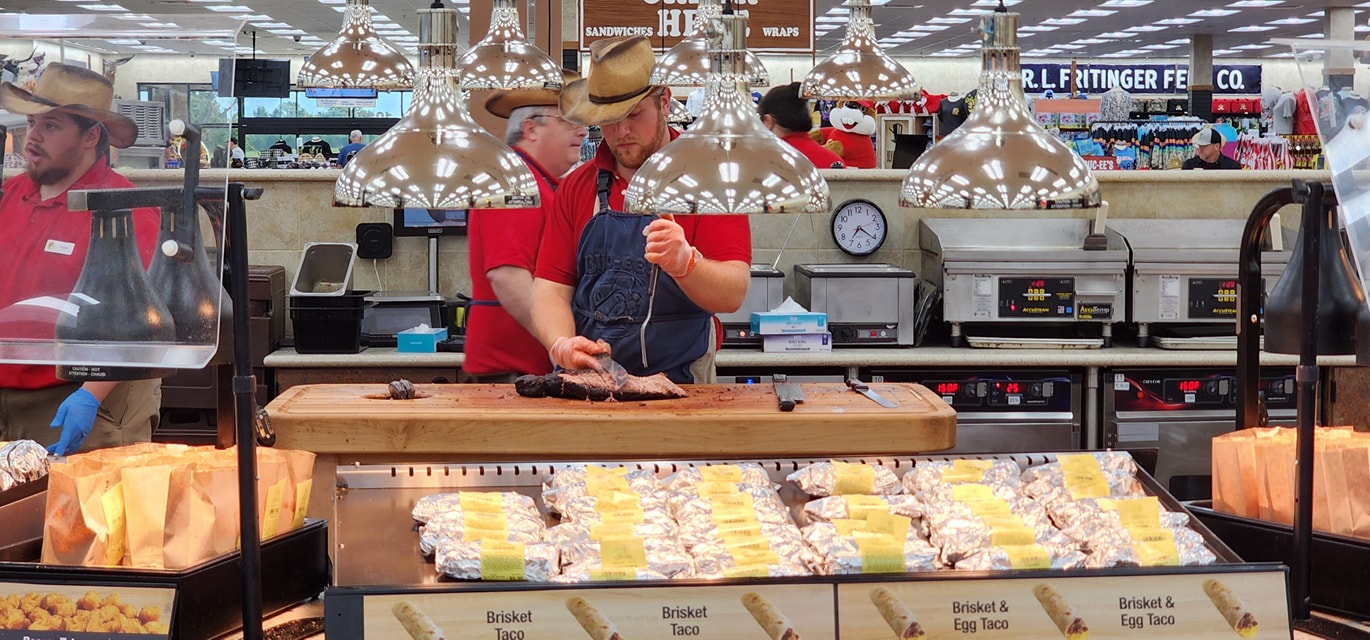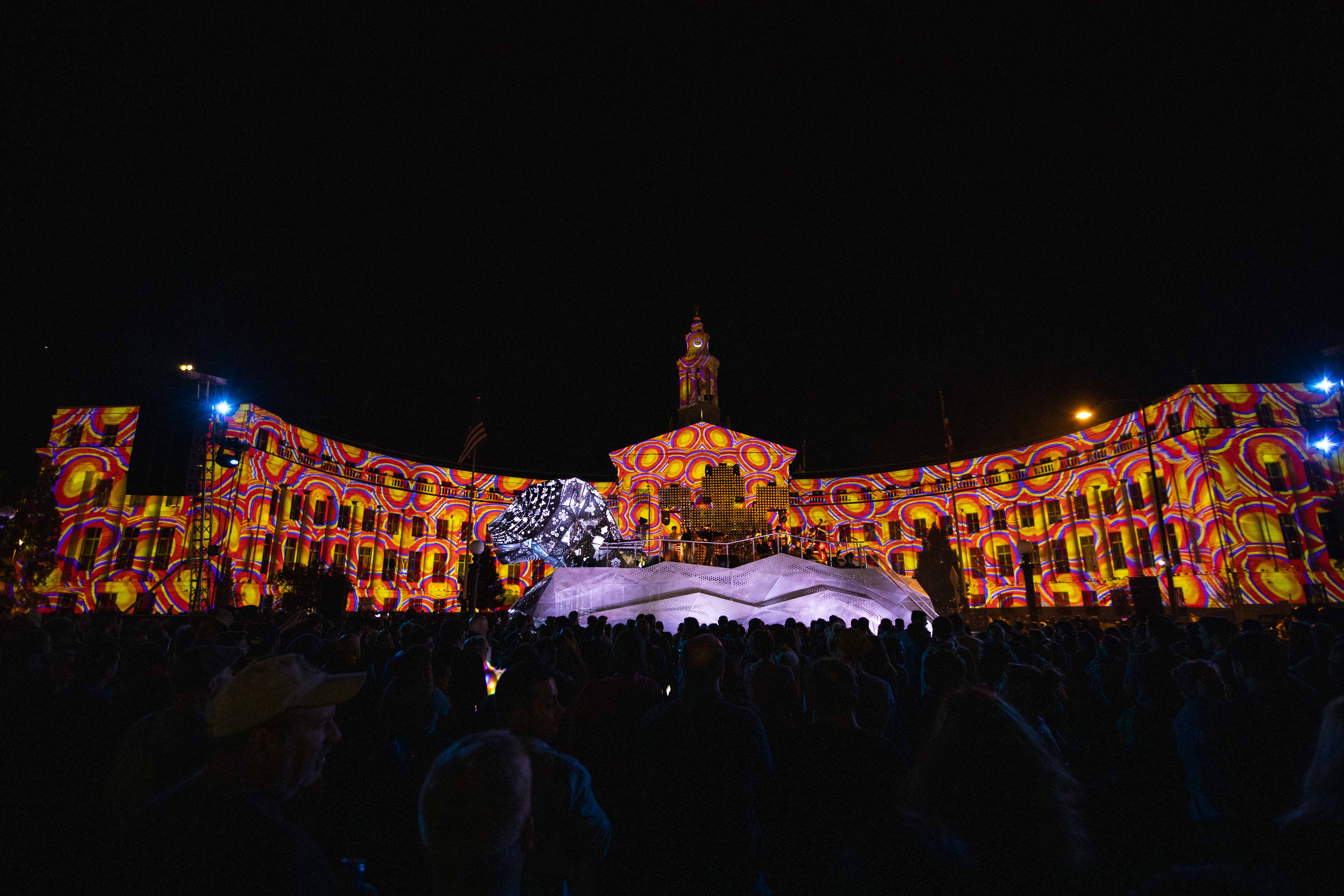The Biennial of the Americas Festival, which ended on Sunday, delivered more to Denver this year than it ever has before. While it taught us that we can learn a lot from the men and women working throughout the Western Hemisphere, it also showed us there are positive changes happening right here in Denver, too. Even though the climax of the event was undoubtedly the artistic centerpiece Jaguara, which lit up Civic Center Park with a breathtaking visual and auditory display from South America, the festival packed a lot of information into an accessible (and almost completely free) format. It’s unrealistic to assume that anyone had time to attend every single hour of programming — there were over 40 hours of events, workshops, talks, concerts and film screenings over five days — so we went to as many as possible and have a breakdown about the most important lessons we learned.
Younger Generations Are Demanding More Action

The Biennial is such a “grown-up” event, with workshops that last a few hours on topics as mercurial as “Green with Empathy” that it’s hard to imagine teenagers having anything to do with it. But at several points during the week, the voice of the younger generations was amplified to a point where it was impossible to ignore.
It was the loudest during the Clínica organized by local nonprofit PlatteForum, “Conversations with Gen Z.” ArtLab interns (high school-aged students who participate in a special program) were divided into discussion groups where they interviewed two qualified professionals on topics related to DEI, or Diversity, Equity, Inclusion. Audience members were encouraged to listen in on these interviews and move between groups. At one table, ArtLab intern Kevin said, “sometimes we don’t feel like you take us seriously… and we are very serious.” In another group, an ArtLab intern followed up on a question with her own experience with homeless populations and the prevalence of drug abuse. In these conversations, it was more than apparent that Gen Z feels as if the people in charge (adults) need to do better, across the board. “Other people’s actions have put us in this position,” another ArtLab intern mentioned, which is a sentiment that relates to everything from wealth inequality to environmental health. – Cori Anderson
We Can Learn A Lot From Our Neighbors

It’s human nature to assume that no one else experiences what we do, especially when they’re bad experiences. However, it often feels like we do that even more in the US, which makes the Biennial of the Americas so important. Instead of continuing with blinders on to block out the rest of the world, our eyes were opened. We got the chance to learn that many communities in other countries are not only experiencing the same issues we are, but they’re also solving some of them.
For instance, communities and non-profits in Brazil and Toronto are successfully tackling housing issues that Denver has taken years to even address. Fashion designers in São Paulo and Mexico are building brands that are both sustainable and good for their local communities. A National Park Director in Colombia has gone to great lengths to protect ancient lands inhabited by Indigenous communities. They’re doing all of this with more than just empathy. They’re doing it with a commitment to ethical practices and empowering their communities. – Carlos Escamilla
Stop Talking About Immigration and Start Listening

One of the most enriching and informative conversations took place toward the end of the first day. The Latino Leadership Institute brought together four people who painted a very different picture of immigration than we’re used to hearing. Actual facts about the current state of migration show us that there is an urgent need to address its challenges – and that the US is doing everything wrong right now.
While the challenges of migration may be complex and there’s no definitive answer, it’s clear from thought leaders on both sides that the US is failing its neighbors and the world. Trevor Sutton from the Center for American Progress and Laura Collins from the George W. Bush Presidential Center found common ground in a list of recommendations for how to approach immigration. The main lesson from the list is that the US needs to take a step back and learn how to be a leader in the discussion, not a bully. – Carlos Escamilla
The Arts are the Key to Empathy
Even though the Biennial has always had art present, there hasn’t been much opportunity for artists to speak about their work in context. As it turns out, however, “Empathy in Action” was the perfect theme for their introduction. As international curator Marisa Caichiolo put it, “there’s no art without empathy.” Art has the ability to put you in someone else’s shoes — sometimes quite literally, as was the case with one of the art activations during the event, called A Mile in My Shoes. But the other reason why art worked so well with the empathetic atmosphere is that creative interventions might be the best way to solve our problems. As previous sections detailed, action is needed and the political and economic avenues to address those problems aren’t working.
READ: The Colombian Duo Who Brought Jaguara to Denver Explains the Big Cat’s Significance
In the second Clínica, “Bringing Empathy Home: Housing Innovations from Abroad,” LoriAnn Girvan with ArtScape in Toronto told us that the only thing the communities she worked with demanded was that there were art and culture centers in their neighborhoods. ArtScape works directly with Toronto’s mixed-income communities to redevelop their neighborhoods, making sure that every voice is heard, and the common thread among all of them was art. It’s a testament as to why having public art installations during the Biennial is paramount to its success – especially since this was the first year it was opened up to the public free of charge. – Carlos Escamilla and Cori Anderson
Our Favorite Takeaways

“We Belong Here” – My favorite part of the festival was completely unintentional. As I was sitting and listening throughout the Clínicas and symposia, I began noticing that we’re all talking about the same things, we’re just using different words and mediums to say them. We’re all experiencing turmoil, whether it’s climate change, displacement, political division or social issues. Some are much more affected by the turmoil – that’s a given – but it’s uplifting to know that people in multiple countries, across multiple industries, are coming together to make things better for all of us. – Carlos Escamilla
“Jaguara” – You know that feeling at a concert, where the bass vibrates through your chest and makes your whole body hum? Not only did I experience that from the actual music at the artistic centerpiece, Jaguara, but the feeling lasted throughout the following day — in a metaphorical sense. Seeing and feeling the colors, shapes and sounds of South America made me think about the communities who are facing struggles that people in Downtown Denver can’t even fathom. It rounded out all of the lessons from the hours of workshops and conversations and reminded me that the best path forward, out of the world’s problems, is through connecting, collaborating and listening to each other. – Cori Anderson





